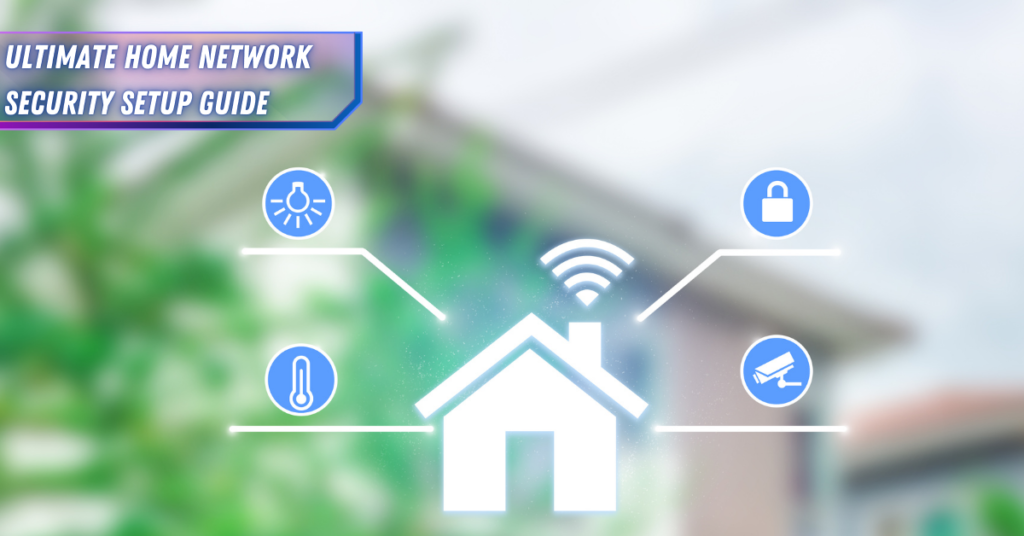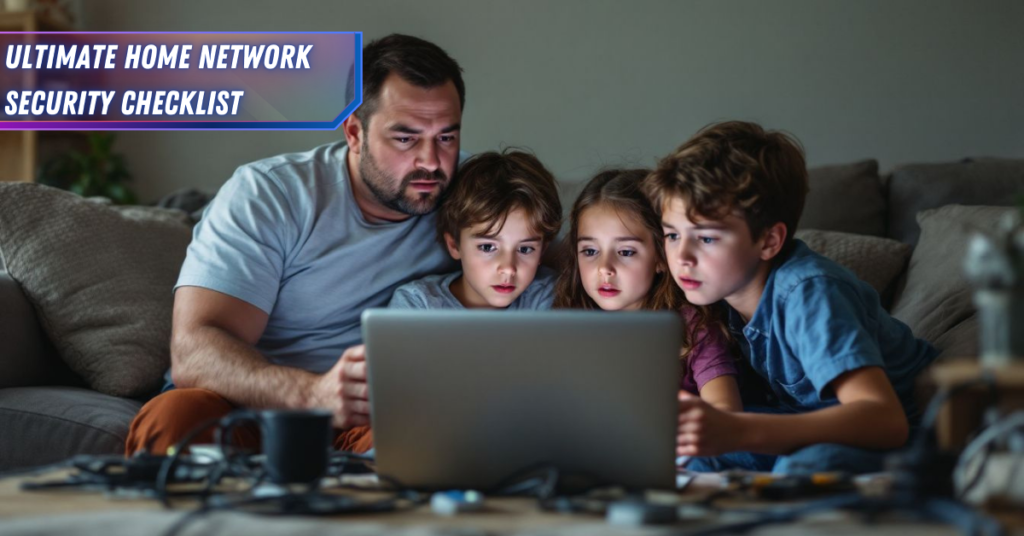In today’s interconnected homes, DLNA (Digital Living Network Alliance) technology has become the invisible thread that connects our media devices. With over 3 billion DLNA-certified devices worldwide, chances are you’re using this technology right now! Whether you’re streaming movies to your smart TV or sharing photos on your gaming console, DLNA makes media sharing seamless – but it can also leave your network vulnerable if not properly secured.
I’ve spent years working with network security, and I can tell you that DLNA security is often overlooked. Let’s dive into how you can protect your media devices while still enjoying the convenience of connected entertainment.
Understanding DLNA Technology
Before we jump into security measures, let’s understand what we’re protecting. DLNA is like a digital handshake between your devices that allows them to share media seamlessly. Here’s how it works:
Key Components:
- DLNA Servers: These store your media (like your NAS or computer)
- DLNA Renderers: Devices that play the media (smart TVs, gaming consoles)
- DLNA Controllers: Devices that find and manage media (smartphones, tablets)
The technology uses UPnP (Universal Plug and Play) for device discovery and communication, which, while convenient, can create security challenges if not properly configured.
Common DLNA Security Vulnerabilities
Let’s address the elephant in the room: DLNA’s default settings often prioritize convenience over security. Here are the main vulnerabilities I’ve encountered. DLNA implementations often contain critical security flaws that can expose users’ devices and data to various attacks.
Recent discoveries have revealed several concerning vulnerabilities in popular DLNA-enabled devices.
Authentication Weaknesses
The DLNA protocol suffers from several authentication-related vulnerabilities:
- Messages are typically transmitted in plaintext, allowing attackers on the same network to capture private data and device information
- Many DLNA implementations lack proper authentication mechanisms, making them vulnerable to man-in-the-middle attacks
- Unauthorized file access is possible due to weak URL generation schemes used for media sharing
Network Exposure Risks
Port Vulnerabilities
DLNA services commonly run on specific ports that can be exploited:
- Port 8080 for web server access
- Port 8200 for DLNA/UPnP services
Remote Code Execution
Several critical vulnerabilities have been discovered that allow attackers to:
- Execute arbitrary shell commands without credentials
- Write files to unauthorized locations
- Take complete control of DLNA-enabled devices1
Real-World Impact
Recent security research has uncovered concerning statistics:
Attackers are actively scanning for and exploiting DLNA vulnerabilities to deploy malware like Mirai botnet
Over 92,000 vulnerable NAS devices were found exposed to the internet
Essential DLNA Security Best Practices
Here’s where we get practical. Follow these steps to secure your DLNA setup:
1. Strong Authentication Setup
bashCopy# Example DLNA server configuration
media-server.conf
auth_required = true
min_password_length = 12
encryption_enabled = true
2. Network Segmentation
Create a separate VLAN for your media devices. This contains potential breaches and protects your sensitive data on other networks.
3. Access Control Configuration
- Enable user-level permissions
- Create specific media sharing groups
- Implement time-based access restrictions
4. Regular Updates
Keep all DLNA devices updated with the latest firmware. Manufacturers frequently patch security vulnerabilities.
Securing Different DLNA Devices
Each device type requires specific security considerations:
Smart TVs
Basic Security Measures
Smart TVs are often the most vulnerable DLNA endpoints due to their complex operating systems and numerous network services. Essential security steps include:
- Disabling automatic content detection
- Restricting DLNA to known devices only
- Implementing network isolation through VLAN configuration
Advanced Protection
Modern smart TVs offer additional security features:
- Content encryption for premium streams
- MAC address filtering
- Secure boot verification
- Application-level access controls
Gaming Consoles
Network Configuration
Gaming consoles require specific security considerations when used as DLNA clients:
- Enable WPA3 encryption for wireless connections
- Configure static IP addresses
- Implement QoS settings to prevent DDoS attacks
Media Access Control
For secure DLNA implementation on gaming consoles:
- Create dedicated media sharing profiles
- Enable two-factor authentication where available
- Use console-specific parental controls
- Configure automatic device blocking after failed authentication attempts
Media Servers
Server Configuration
Professional media servers require robust security measures:
- Implement TLS 1.3 encryption for all connections
- Configure proper file system permissions (chmod 644 for media files)
- Enable detailed access logging
- Set up intrusion detection systems
Access Control
Advanced media server security features should include:
- Role-based access control (RBAC)
- IP-based access restrictions
- Bandwidth throttling
- Session management

Network Configuration for DLNA Security
Your network setup is crucial for DLNA security:
Firewall Configuration
Essential Port Rules
The following ports need careful management for DLNA operations:
- UDP port 1900 for SSDP (Simple Service Discovery Protocol)
- TCP/UDP port 5001 for main DLNA traffic
- TCP port 9001 for web interface access
bash# Basic DLNA Firewall Rules
# Allow SSDP discovery only from internal network
iptables -A INPUT -p udp --dport 1900 -s 192.168.1.0/24 -j ACCEPT
iptables -A INPUT -p udp --dport 1900 -j DROP
# Allow DLNA traffic on main ports
iptables -A INPUT -p tcp --dport 5001 -s 192.168.1.0/24 -j ACCEPT
iptables -A INPUT -p udp --dport 5001 -s 192.168.1.0/24 -j ACCEPT
# Web interface access
iptables -A INPUT -p tcp --dport 9001 -s 192.168.1.0/24 -j ACCEPT
VLAN Segmentation
Media VLAN Setup
Create a dedicated VLAN for DLNA traffic:
- Assign VLAN ID 100 for media devices
- Configure strict access controls between VLANs
- Implement QoS policies for streaming traffic
Inter-VLAN Routing
bash# Example Layer 3 switch configuration
interface vlan 100
description DLNA-Media-VLAN
ip address 192.168.100.1 255.255.255.0
ip helper-address 192.168.1.10
no ip redirects
Access Control Lists
DLNA-Specific ACLs
bash# Example ACL configuration
ip access-list extended DLNA-ACL
permit udp any any eq 1900
permit tcp any any eq 5001
deny ip any any log
Network Monitoring
Traffic Analysis
Configure network monitoring for:
- DLNA discovery broadcasts
- Media streaming patterns
- Unauthorized access attempts
- Protocol violations
Windows Firewall Configuration
Inbound Rules Setup
For Windows systems, configure these specific rules:
- Allow UDP 1900 for SSDP discovery
- Allow TCP for main DLNA service ports
- Enable network discovery while maintaining DLNA functionality
Advanced DLNA Protection Measures
For those wanting enterprise-level security:
Encryption Implementation
- Use TLS for device communication
- Encrypt media storage
- Implement secure key exchange
- Regular encryption key rotation
Security Monitoring
- Set up intrusion detection
- Enable detailed logging
- Configure alerts for suspicious activity
- Regular security audits
Troubleshooting DLNA Security Issues
When problems arise, follow this diagnostic process:
- Check logs for unusual activity
- Verify network segmentation
- Test device authentication
- Validate firewall rules
- Review access permissions
Common issues and solutions:
CopyProblem: Unauthorized device access
Solution: Review and update access control lists
Problem: Media streaming interruptions
Solution: Check network segmentation and firewall rules
Problem: Device discovery issues
Solution: Verify VLAN configuration and UPnP settings
Future of DLNA Security
The landscape of DLNA security is evolving. The future of DLNA security is becoming smarter and more robust, focusing on protecting our home networks in ways that are both powerful and user-friendly.
Here’s what to watch for:
- AI-powered threat detection
- Enhanced encryption standards
- Improved device authentication methods
- Integration with smart home security
- Zero-trust network architecture
Conclusion
Securing your DLNA setup doesn’t mean sacrificing convenience for security. By implementing these measures layer by layer, you can build a robust security framework while maintaining the seamless media sharing experience DLNA provides.
Remember to: ✓ Regularly update all devices ✓ Implement strong authentication ✓ Use network segmentation ✓ Monitor for suspicious activity ✓ Keep encryption enabled
Want to learn more about network security? Check out our guides on IoT security and home network protection. Stay safe while streaming! 🔒
Remember to always consult your device’s manual and security documentation for specific configuration instructions.



